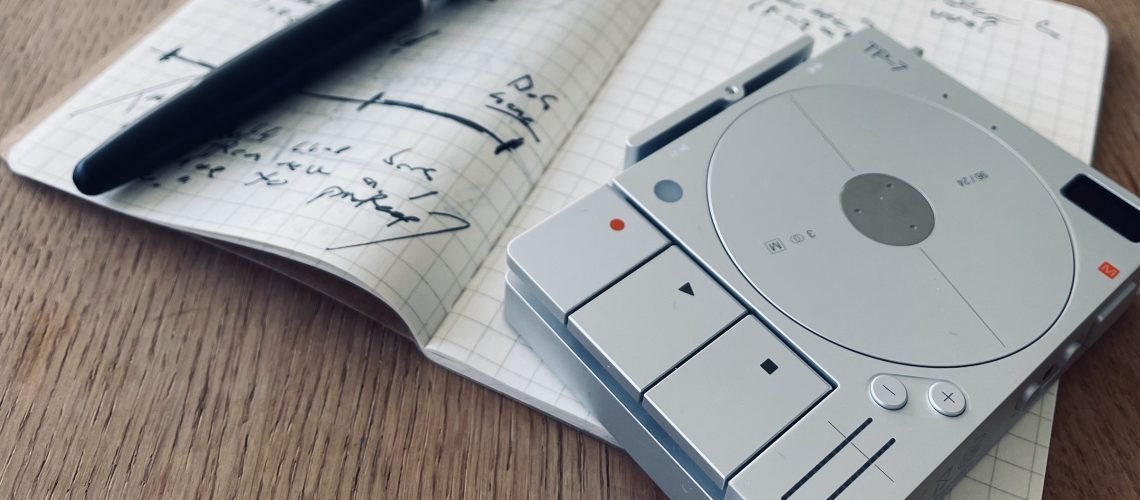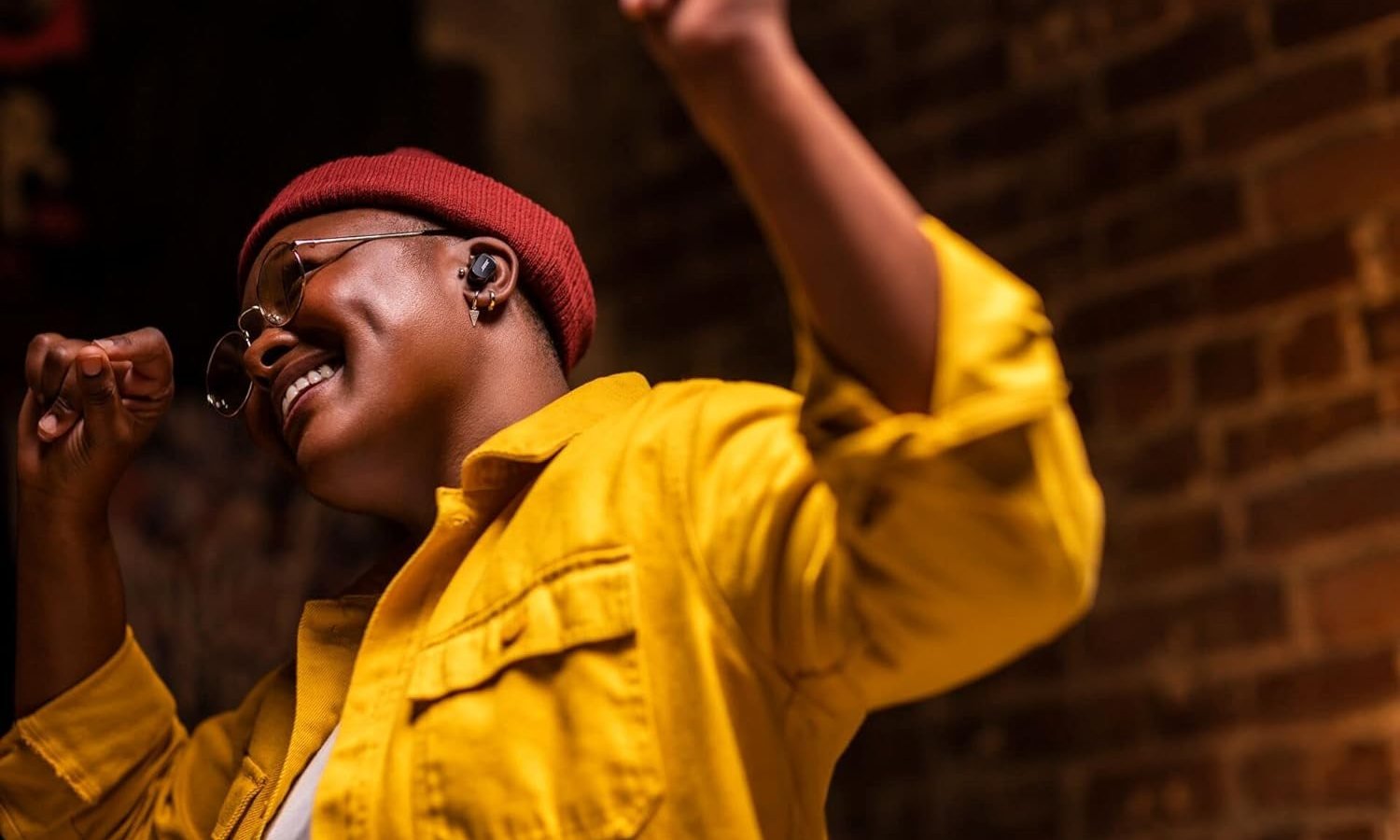Teenage Engineering’s fecund design imagination has yielded inventions wonderful, ambitious, sometimes prohibitively expensive, odd… but can the company reinvent the lowly field recorder? And was the “field system” just marketing vision or pipe dream – or does it bring those pieces together for something genuinely musical and productive? We turn again to CDM’s at-large Swedish gear tester (and tester of Swedish gear) Andreas Roman for a proper review. -Ed.
ANDREAS ROMAN
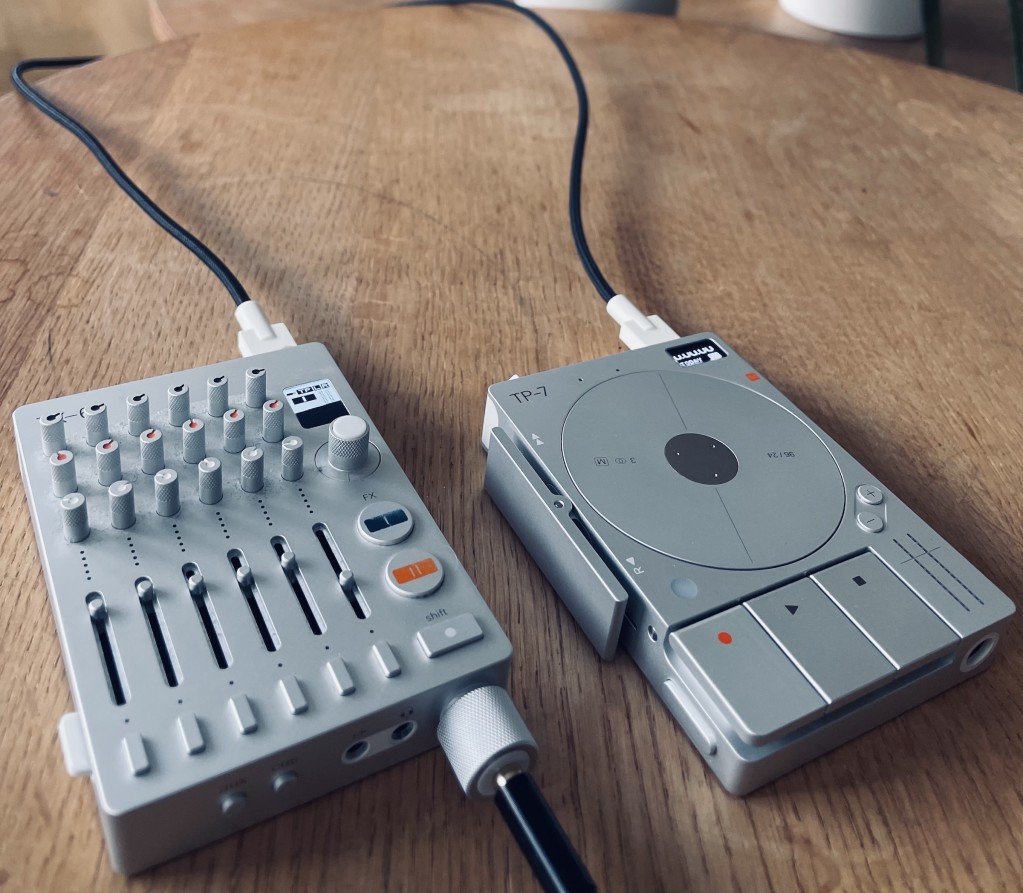
Specs:
- 3x stereo two-way jack input/ output/headset connectors
- 1x stereo headphones connector with 3.5 to 6.35 mm jack adapter
- internal microphone and speaker
- 128 GB internal storage
- 24-bit/96 kHz usb audio interface
- bluetooth low energy
- rechargeable battery
- 7 hr battery life
- 64×32 pixel monochrome display
- 96 mm x 68 mm x 16 mm170 g / 5.6 oz
You complete me
So there it is. The fourth piece in the Teenage Engineering field system — the kit that completes it like Dorothy Boyd completed Jerry Maguire. Maybe it’s not the last. I don’t know. But it’s certainly the one that makes me think, with this in place, what else could I possibly need?
And the sheer guts of it, what it contains, the fact that it’s out there, that we got devs in this world who take their craft seriously enough to charge us good money for something that you could easily dismiss as replaceable by your phone. But like before, this is Teenage Engineering telling us, you ain’t heard nothing until you’ve heard this. This is the gutsiest release in their Field range so far.
“It’s the one that makes me think, with this in place, what else could I possibly need?”
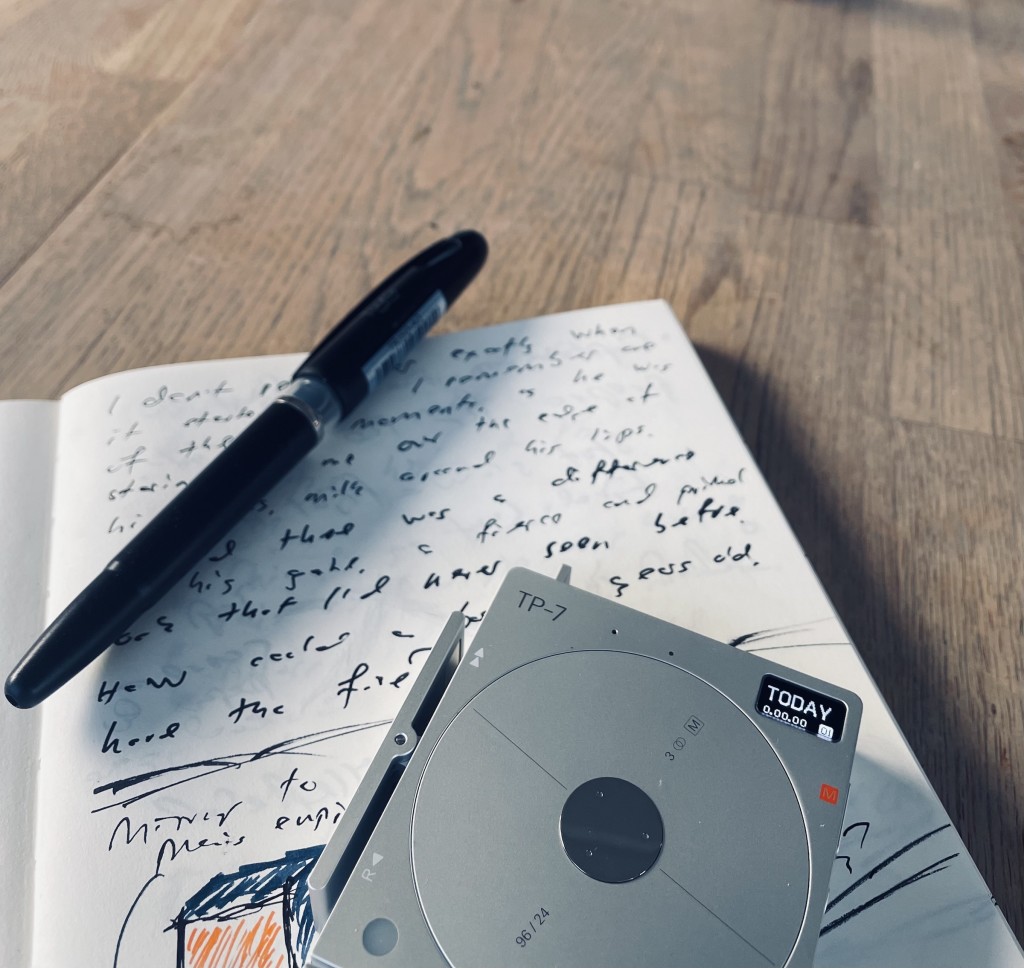
Nothing but the facts
So like a journalist pressing Rec, let’s start with the facts. The TP-7 is a digital tape recorder. It has a wheel that looks like a spinning tape reel when you record and playback audio. You can use that wheel to rewind, fast forward, or be funky when you record and play – with interesting results, I might add. When spun right, it’s a performance tool and a studio trick. Yes, that’s just like the tape feature on the OP-1.
The TP-7’s primary use cases are field recordings, audio notes, interviews, capturing stereo tracks, recording layered or live multi-track sessions, playback of anything, really, and as a pocket-sized collector of ideas in sound. I suppose you could use it as a music player or a DJ deck, but that’s icing on the cake made for another party.
The TP-7 has a mono microphone, three stereo line-ins that can also serve as line-outs, and USB audio with streaming capabilities. It’s the same size as the TX-6 and dear lord; they are cute together. The unit’s a bit fiddly to operate – that might seem opinion, but here it’s clear enough to qualify as fact.
Making waves
Facts aside, though – what’s it actually like? To know this, we must begin with the box, because the unboxing of the TP-7 is an experience in itself. I won’t spoil it for you, but let’s just say it’ll stay in my memory for some time. And that’s part of what the TP-7 is all about, I suppose.
With the wrapping removed, I turned on the recorder and went outside into the field. There’s a shortcut to capture audio through the microphone if you push the memo button and keep it pressed, so that’s what I did, collecting winds and rain, the chatter from seaside tourists, and the echoing laughter from a neighbor’s courtyard party. I went home and recorded my youngest son bubbling with joy as his mother tickled him under his feet, my oldest son as he quietly hummed on something that was only his song, and my teenage daughter debating with her friends about what to wear to school the next day.
I sat by the piano and played something through the microphone to get that natural ambience and domestic background sounds. I played again — this time through the inputs to fully embrace a direct recording of Roland SuperNatural audio. I sequenced some improvisations from my OP-Z into the TP-7. It only supports MIDI start and stop, not bpm sync, so I made its free-form nature into a thing, which pairs well with the OP-Z’s live performance approach. For a while, I was Aphex Twin. I played some synths through my Chase Bliss pedals, actually did a little singing into the microphone when no one was around, and put the recorder by the window on a stormy night to see if it could hear the thunder. It could.
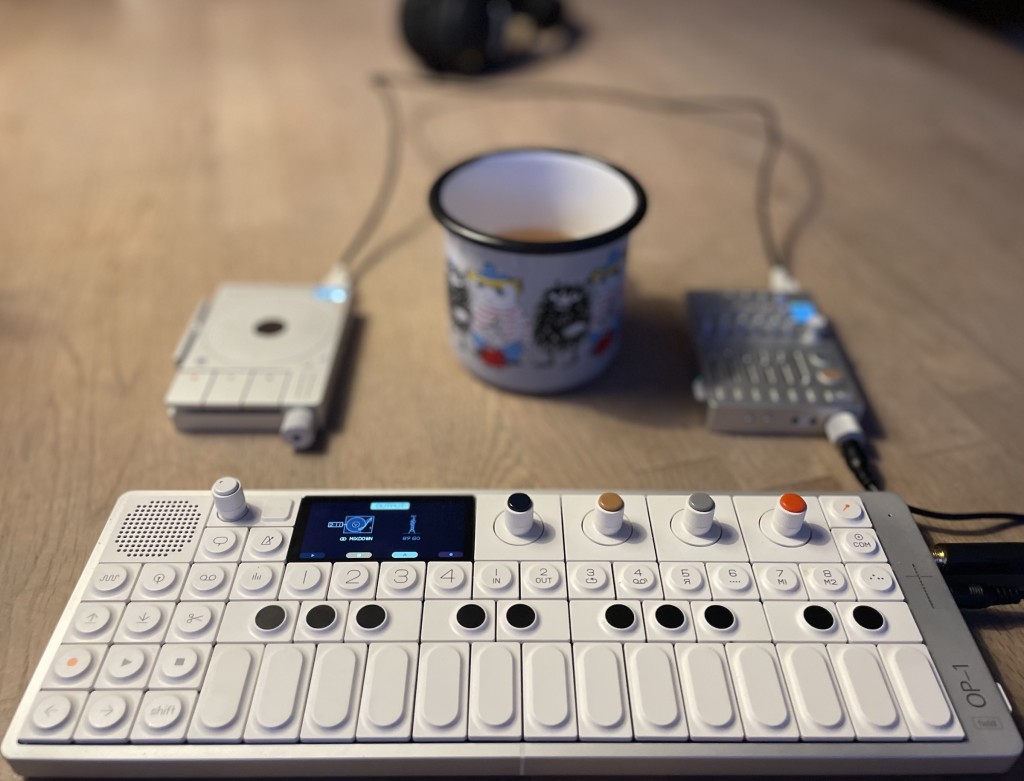
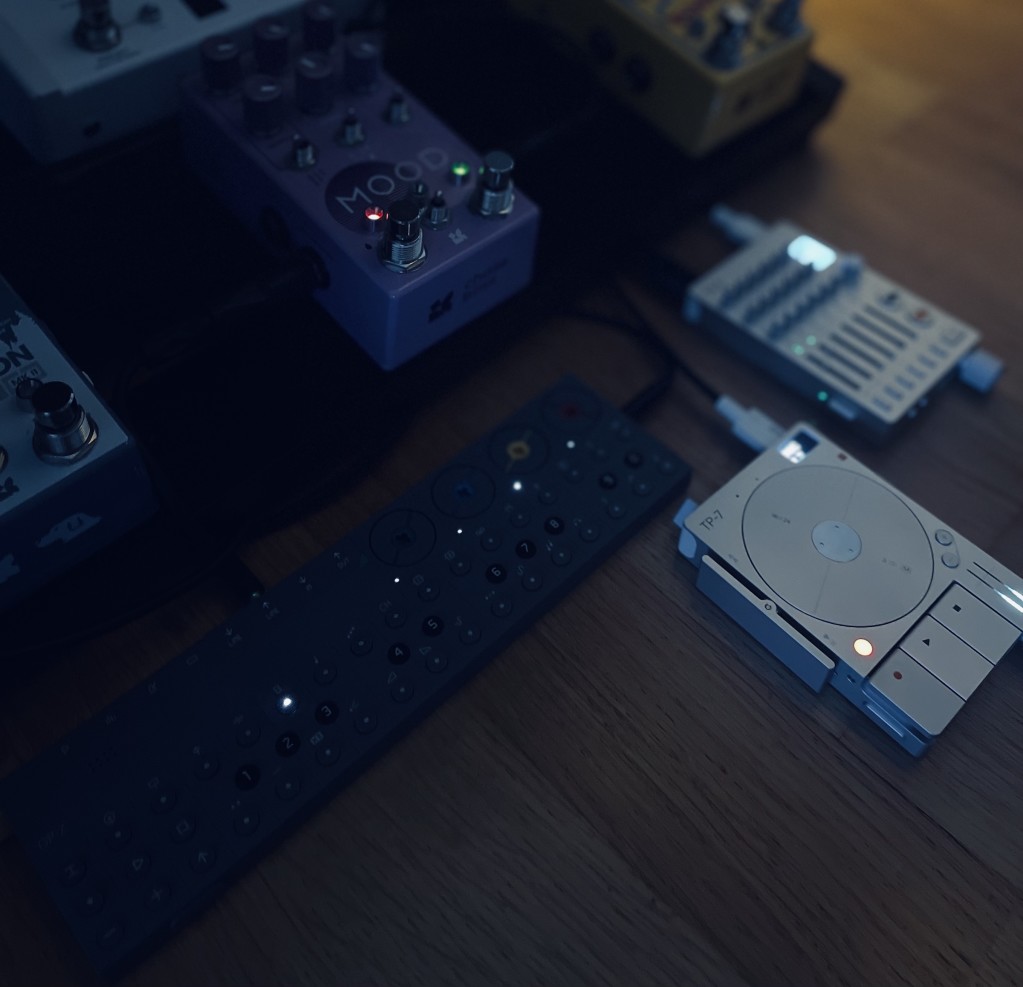
After a few days, I had sounds and slices, ambience and voices, harmonies and demos, to the point where I felt almost overwhelmed. It was like swimming in the sea, not sure which wave to hit next.
“Collecting winds and rain, the echoing laughter from a neighbor’s courtyard party … my youngest son bubbling with joy as his mother tickled him under his feet. It was like swimming in the sea.”
Flow
Like any recorder, the TP-7 needs context to have a purpose. But where other products in this range mostly do the same thing and compete on specifications alone, Teenage Engineering’s proposition is different. Typically once I’d gathered recordings on another device, I’d transfer them to a sampler and continue work from there. Not so with the TP-7. It finds multiple uses across the creation and recording chain, which underlines the core philosophy of TE’s Field series. There’s the functional value of features and output quality and the emotional value of convenience and flow. Not only are these instruments flexible and sound great, but they’re also extremely easy and direct.
So I recorded my sessions from my TP-7 onto my OP-1, track by track, and used the OP-1’s tape to slice and shift stuff around, slowly building songs from each demo worth keeping. I did some resampling and processing through Chase Bliss gear using the TX-6 as a channel router and added a synth or two from the OP-1 to wrap that glorious stereo shroud around it all.
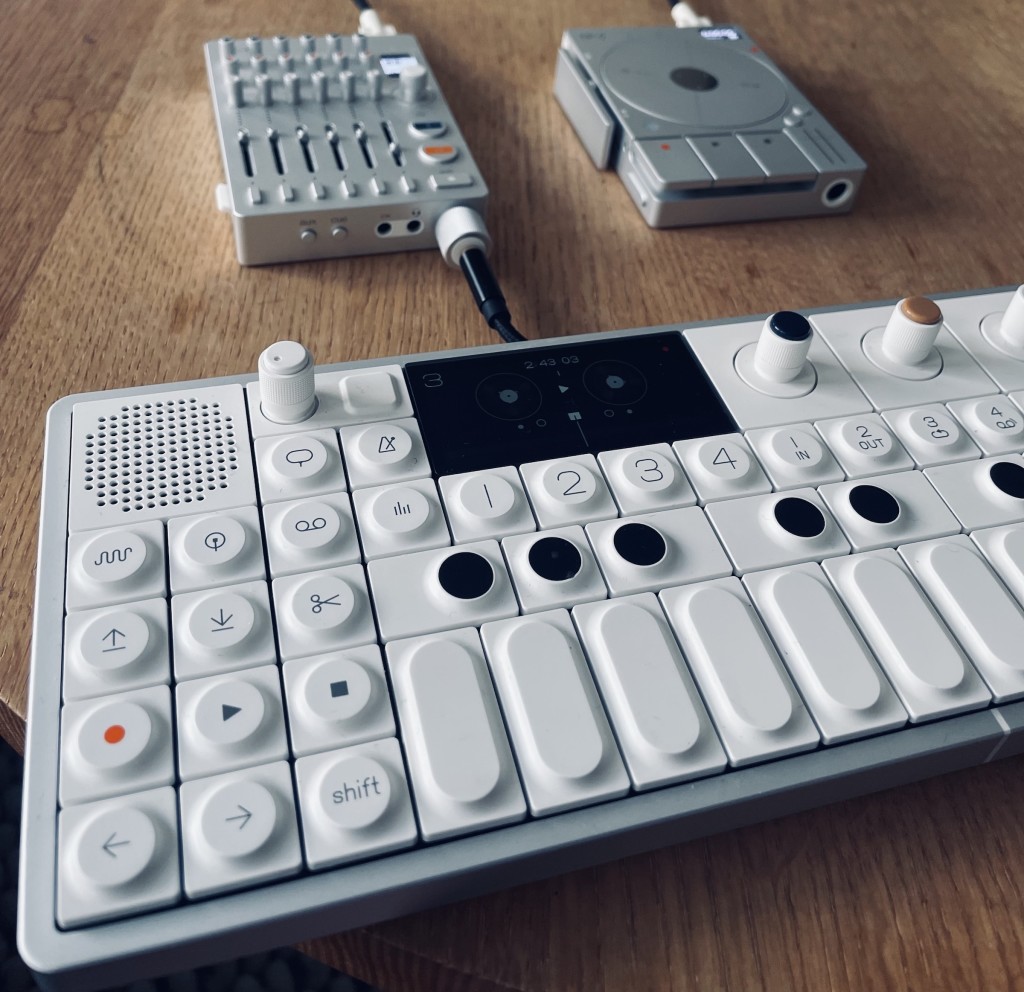
Not all songs made it this far, but for those that did, I recorded back onto the TP-7 through the TX-6 for the full six-track experience. Sometimes, I had tracks to spare on the TP-7, so I recorded an additional live take or two from a mate’s Moog DFAM drum machine, that Yamaha grand in the music store they let me play whenever I show up, some dust and dirt from the Sequential Prophet 12, or just drops from a passing rainshower, striking the window ledge with its slow beat. I didn’t worry much about its place in the mix but just recorded whatever I felt might work, knowing the TX-6 would handle it later.
I mixed all my songs on the TX-6, with three-band EQ, compression, and FX send per track, filters and performance effects, limiting, volume, and panning. Most of the time, I only needed one USB cable between the siblings to make it work. With all field kits running on batteries and needing about as much space as a small notebook, time and place didn’t matter. Some of these sessions were done after midnight, in the early mornings before the kids woke up, or in a coffee shop somewhere, in transit between places.
“I mixed all my songs on the TX-6, with EQ, compression, and FX … some of these sessions were done after midnight or in the early mornings before the kids woke up.”
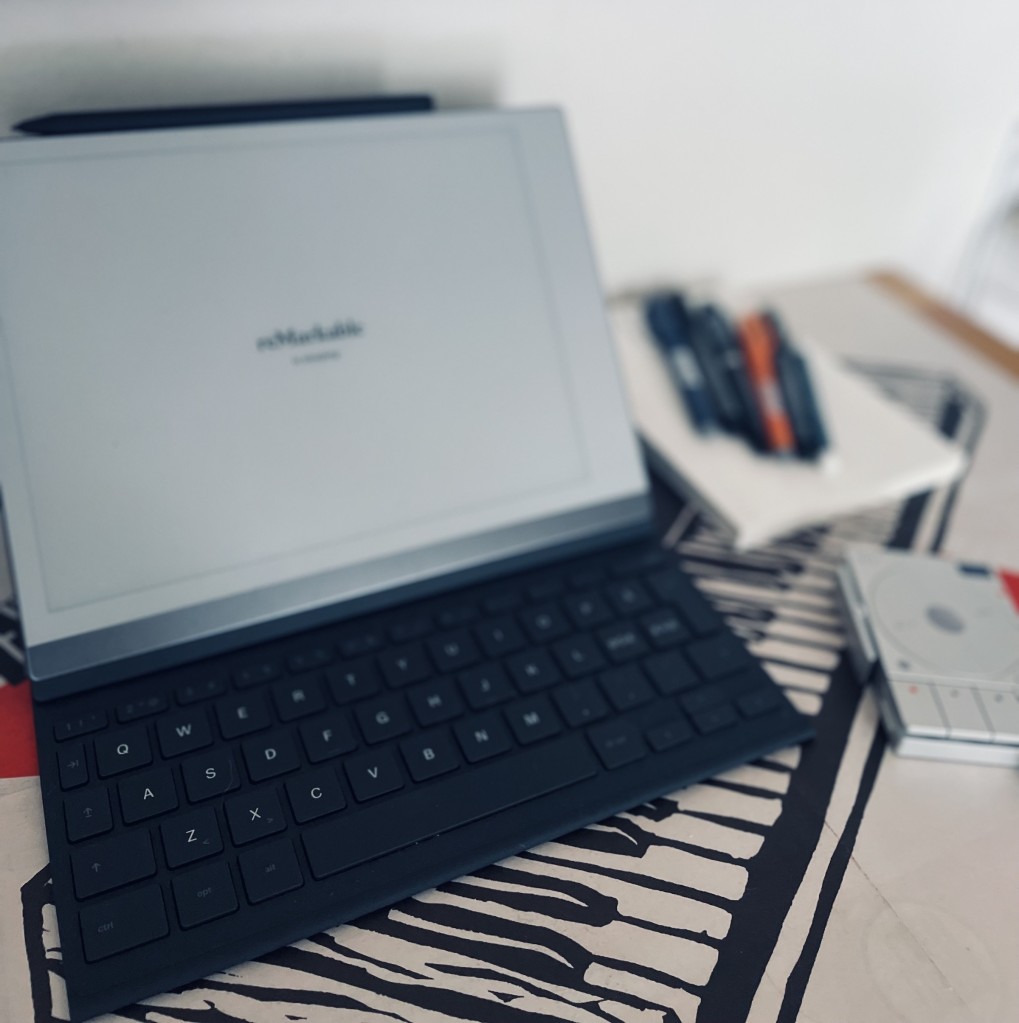
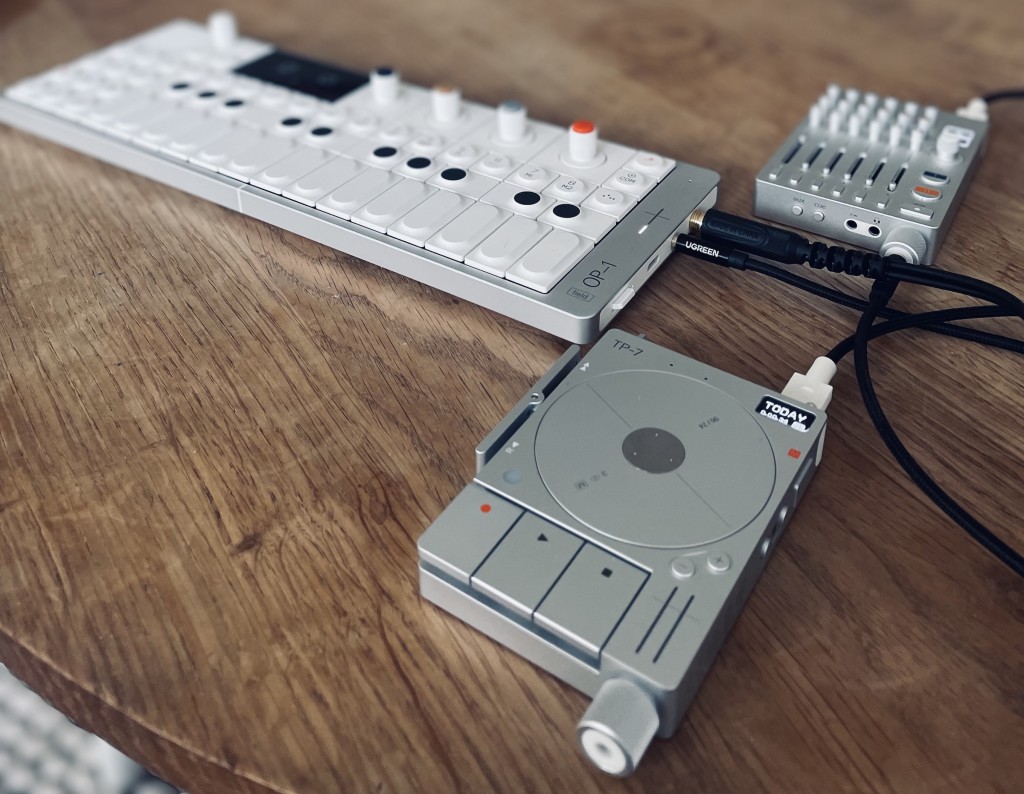
Tradeoffs
Ironically, it’s often the times that the TP-7 shows its most powerful features that it also reveals its weaker points – and the occasionally unfinished vibe of the field system. Gear with a more physical layout tends to present the overall status of your recording session clearly. With no option to just assess what’s going on at a glance, you’ll likely overdub when you didn’t intend to or replace music you wanted to keep. There’s a lot going on, and you’ll make mistakes in the beginning. That’s the price you pay for power in such a slick package. Do you want this? Learn it.
For all the power of the field series, there are a few gaps you have to accept (for now). As I noted, the TP-7 can start and stop via MIDI but little else. There’s no support for MIDI clock sync. Looping is restricted to full tracks or punch in and out. The multi-channel USB streaming is primarily for connecting the TX-6 and TP-7, and while that’s totally fine, it leaves you yearning for a direct four-track connection with the OP-1. That would mean you could run four tracks on the synth and run them into the TP-7, or the other way round, load a four-track TP-7 demo onto the OP-1 to be fleshed out. And with only three memory slots available for mixer settings on the TX-6, this might fall short of your needs for doing a complete live set on just this gear.
But to me, these aren’t really drawbacks. They’re just facts. I’ve used the TP-7 daily since I got it for music, work, and writing. Part of this review is transcribed from the TP-7’s native app, ideas I caught when a stroke of inspiration hit me. I’ve been like a journalist on the hunt for his next scoop when I’ve pulled out my battery-powered silver bullet with that spinning reel in the center and recorded the words you’re reading now. Even so, there remains an unspoken promise on what the field system can be now that the TP-7 binds it all together with its tape-like gravity. I’m looking at Teenage Engineering’s recent track record for firmware updates and think they’re just getting started. Look, it’s great as is; It’s an update or two away from perhaps completely transferring many musicians’ workflows. [Ed.: The TP-7 did get a couple of significant firmware updates, but the most recent was in June. We’ll be watching for any upcoming OS bump and will be sure to share any news. -PK]
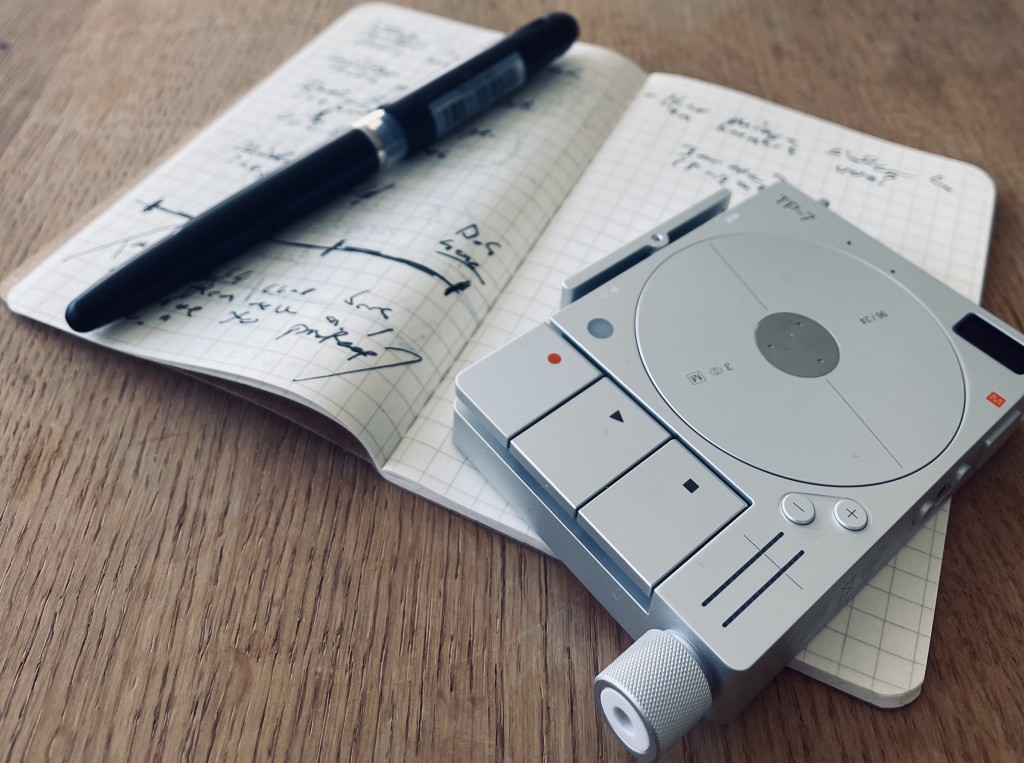
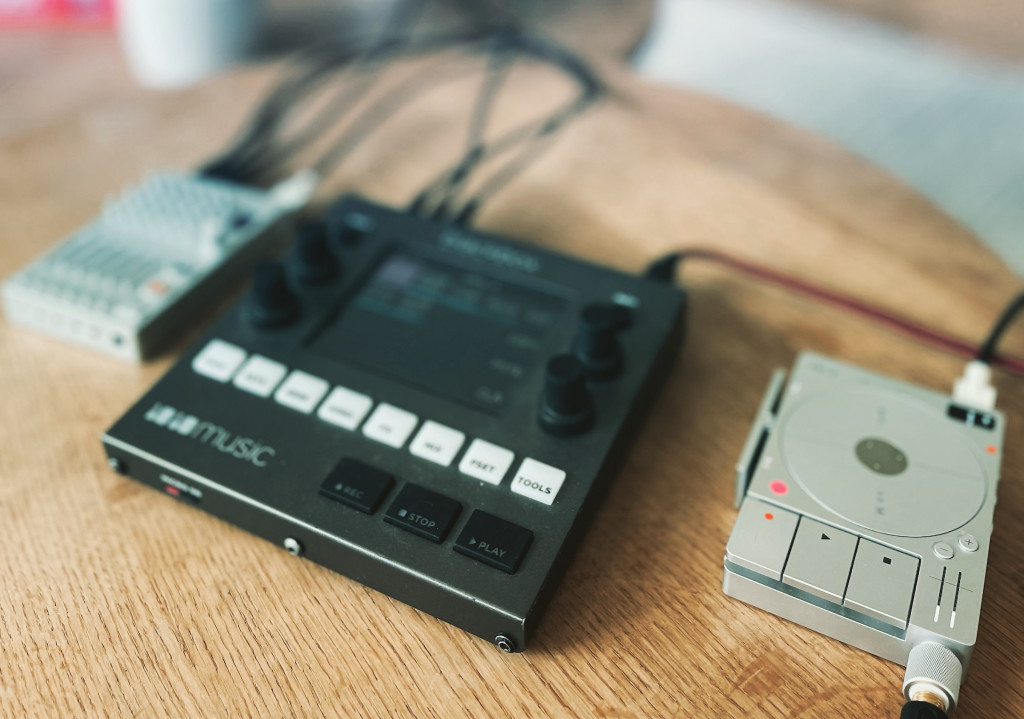
Space and specialists
Out of necessity, studios and recording environments have tended to be big and bulky, complicated and challenging. But while there’s a romance to having this kind of dedicated room, creatives in other media have long been free to be vagabonds. Writers wrote in cafés and hotel rooms; artists went to the sea with their canvas and brushes. Only musicians historically were bound to the studio and its financial and technical challenges, if they wanted to achieve professional quality results. Artists comfortable with computer production have gradually found some mobility, but the hardware crowd keeps searching for their equivalent. There seems to be always something that’s not quite right.
Creatives in other media have long been free to be vagabonds.
For me, I know why that is now. I’ve gone through my Deluges and Elektrons and MPCs. But now instead of trying to find that one super being, I’m assembling a small crew of specialists.
With the TP-7, the recording part of that experience has fundamentally changed. I take it with me everywhere. I capture stuff with the touch of my finger, spinning it through the air like a kid making soap bubbles. All those moments in time that won’t come back are right there for me to grab and put in a context where they can shine in ways I couldn’t imagine before. The effort and work put into the TP-7 to make it a catcher in the field makes all the difference. It doesn’t matter if you already have a phone or a Zoom or Tascam. They’re functional machines that perform a task. I’m sure they’re great. Hell, I recorded most of my early work on a Zoom H1n and I was happy with that.
But the TP-7 is not that. It’s not just another field recorder, another digital device to store and playback audio. It does so much more; it’s so much smarter. It’s inspiration and empowerment, an enabler and companion. It adds reason to the entire field system, on its own and together with its companions.
It’s just beautiful, really.
As is now tradition, we finish up this release with some wonderful music Andreas made with the gear:
Hit by lightning, attracted by the TP-7 recorder from Teenage Engineering, a session of demos recorded on the little thing eventually turned into this. It’s trivial, I know, but it’s something worth liking for some.
Only me and some kits from Teenage Engineering and Chase Bliss. Oh, and my piano. And the wind and the rain, of course. And my kids, somewhere in the background there.
TP-7 is available direct and from retailers:
If you buy something from a CDM link, we may earn a commission.
TP-7 Digital Tape Recorder [Perfect Circuit]
Teenage Engineering TP-7 Ultra-Portable Audio Recorder [Guitar Center]
For more, and to see some of this device in action, here’s a short review from Gizmodo:
Previously:
